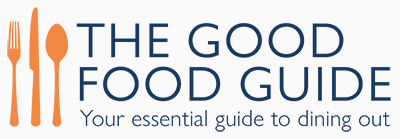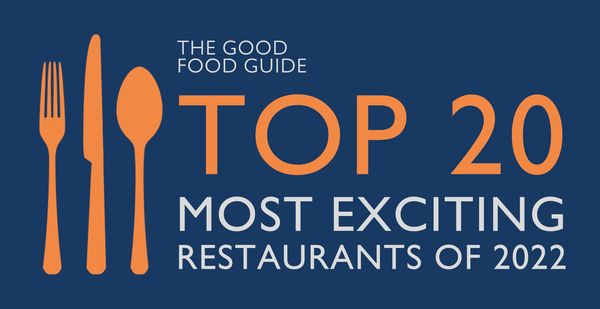If I ever want to consider the question of alcohol’s effect on a restaurant experience – and this month that is exactly what I want to do – then I’m afraid I have to think of Nusret Gokcë. You remember, him, right? These days the man that convention insists we refer to as Salt Bae appears more like the exiled head of a fallen empire. Or, at least, someone besieged by high profile closures in America, a London outpost that saw a recent annual profit loss of £4 million, and the general creeping sense that the world has finally awoken to a grift only marginally more shameless than a presidential meme coin.
But back in the memory-holed autumn of 2021, Gokcë’s shameless, gold-leafed entry to the UK market was briefly the biggest food story around. It was that simple fact which eventually led me to his vast, blandly appointed lair in Knightsbridge, for a legendarily terrible review dinner in a week when I happened to be off booze. Cue a friend sinking an entire bottle of wine to himself, while I washed down our ludicrous £100 ‘golden burger’ and £120 steak with nothing stronger than punchily marked-up, nine quid Coca-Colas. I’d like to think that, even if I hadn’t been coldly sober, I’d have had the same response to Gokcë’s grotesque pricing, elbow-luge seasoning schtick and (nimbly swerved) attempt to feed me steak from the tip of his knife. But I have always wondered. And the broader questions of that meal, related to clarity of judgement and how best to fully experience a restaurant, have nagged ever since.
'Is an abstemious restaurant critic doing their job really well, or really badly?'
Let me put it more straightforwardly. If food, wine and a measure of Dionysian excess is historically an integral part of eating out, how important is it for a reviewer to be an avatar for that? Is an abstemious restaurant critic doing their job really well, or really badly? And, more generally, does British hospitality culture need to modernise and drastically rethink its attitude towards alcohol?
It feels like an apposite time to be contemplating all of this. Though February 1st commences the second month of the year, it increasingly feels almost like an additional New Year’s Eve: the finish line to a collective period of cloistered parsimoniousness and avoidance. Dry January recedes to what is marketed as a sopping wet re-embrace of hedonism; hospitality businesses like Market Halls Vauxhall – which offered 17p pints of beer on January 17th as part of a Blue Monday-level marketing wheeze dubbed ‘Quitter’s Day’ – lean into the mood of emancipated, late-winter revelry. I’m grateful to teetotal friends (whose sobriety often began with a monthly challenge in January or October) for pointing out just how tin-eared this kind of thing is, given that it skates past the idea that some people might benefit from continued boozelessness and also presupposes that moderation around alcohol is a tedious, temporary drag rather than a conscious, longterm choice lots and lots of people make.
'Alcohol is a last bastion in the battle to eke out some profit.'
Yet I can also see why Market Halls and others would be trying something like this. Or, for that matter, anything at all. With food businesses of all kinds hobbled by a raging storm of spiking food costs, rent hikes, and a sharp, upcoming rise in employers’ National Insurance payments, alcohol is important as both a customer lure and a last bastion in the battle to eke out some profit. Writing the words ‘The Yellow Bittern’ in a food column should probably now carry an on-the-spot fine. But I think part of the tension of that lightning rod establishment, and what we might call tap-water-and-radishes-gate, was that it showed just how ruinous wine-averse diners can be to the business model of certain restaurants.
There may be something even more game-changing coming over the horizon. One unforeseen byproduct of growing semaglutide use – Wegovy, Mounjaro and the other ‘skinny jabs’ that are the reason so many acquaintances are looking slightly shrunken and wizenedly sculpted – is a growing cohort of people who have also lost interest in alcohol. Let us not get carried away. The prohibitive cost of these injections will probably, in the medium term, yield a two-tier system of committed inebriates and Ozempic-era abstainers rather than any sort of extinction level event for natural wine bars. But a social shift that has already prompted prominent investors to offload shares in drinks giant Diageo, cannot be dismissed. And so we are forced to consider what a reduced emphasis on alcohol in restaurants might look like or do to our interaction with them.
'Thoughtfully paired alcohol can be a powerful intensifier'
I can definitely see both sides of this debate. Thoughtfully paired alcohol (maybe even, every now and then, a slightly immodest amount of it) can be a powerful intensifier when it comes to great restaurant food. Just before Christmas, a Oaxacan negroni or three primed the pump for the vividly spiced pyrotechnics of Malaysian-Scottish chef (and Ga Ga founder) Julie Lin’s stellar Carousel residency. One of my most purely pleasurable lunches ever was a scrupulously refreshed marathon at Manteca that practically tipped into squatter’s rights territory. On both occasions, the drinks magnified rather than muffled the existing brilliance of the food and atmosphere.
But, as befits a culture where quite liking gin can be the stuff of innumerable fridge magnets and entire personalities, I think we are collectively prone to overplaying alcohol’s importance to dining that is fun, lavish or mischievous. Conspiratorial indulgence. Breathless gossip. Duelling spoons over a gooey headstone of sticky toffee pudding. Booze can facilitate these things, but it does not uniquely own them. Some of my most cherished eating memories of last year – a beautifully austere cheese and ham toastie at Grogan’s in Dublin; sugar-dusted, deep-fried apple pie from The Palmerston in Edinburgh; a table-swamping vegge mezze at Peckham's Persepolis – came during an accumulative four-ish dry months of swapping alcoholic drinks for bottles of Lucky Saint and Botivo Spritzes.
That is the other important point here. Restaurateurs and business owners who see a rise in teetotalism and sober-curiousness as a potential issue are looking at it the wrong way. Any non-drinker used to craply macro-brewed de-alcoholised beers or ‘mocktails’ that are just sickly fruit juice in gopping quantities will know that a business with a varied, thoughtful ‘no and low’ programme (I especially want to shout out Hackney’s Sune here and anywhere stocking Brink’s alcohol-free negroni) will have both their money and their tearful gratitude. Throw in the boom in functional beverages, and a would-be crisis looks like an intriguing opportunity and new form of companionable, meal-improving buzz.
Now, I don’t know if there is a nootropic-laced drink out there powerful enough to take the edge off a sunglasses-wearing human meme dangling overpriced steak into people’s mouths. But I’d certainly be willing to give it a go if anyone has any leads.






